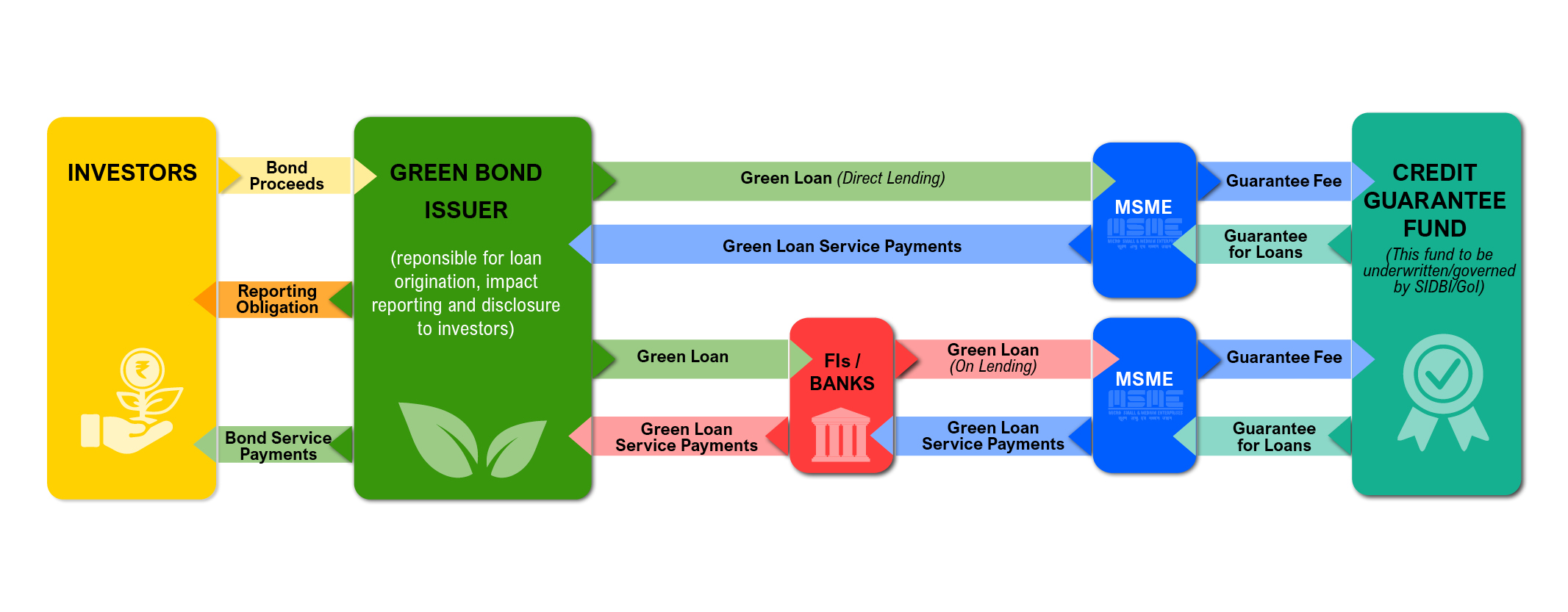How to mobilise green finance for Indian micro, small and medium enterprises

Key Findings
Micro, Small and Medium Enterprises (MSMEs) are unable to secure the financing they need to decarbonise, despite playing an important role in India’s economy and net zero ambitions.
Without immediate viable financial solutions, MSMEs need government intervention to get sustainable debt at a reasonable rate.
A green finance platform could help MSMEs access green bond capital, and Small Industries Development Bank of India, or SIDBI, could become the governing institution.
India has 63 million Micro, Small and Medium Enterprises (MSMEs), the second-highest number in the world after China. MSMEs contribute around 30% of India’s Gross Domestic Product (GDP), 40% of its exports, and employ about 110 million people. In addition, MSMEs’ energy consumption is equivalent to 20–25% of the energy consumed by India’s large industries sector.
Yet despite their economic significance and their role in India reaching net-zero emissions by 2070, MSMEs are unable to secure the financing they need to decarbonise.
MSMEs are unable to secure the financing they need to decarbonise.
Energy costs for the most polluting MSMEs in the manufacturing sector are 10–30% of total production costs, which creates an obvious incentive to invest in energy-efficient plants and machinery and source electricity from cheaper renewable sources. However, MSMEs lack the capacity and financial resources to do this.
The barriers to accessing commercially available finance include stiff lending policies with high collateral security requirements, small project ticket sizes and high transaction costs. And without an investment-grade credit rating or a strong Environmental, Social and Governance (ESG) profile, MSMEs are also unable to access the trillion-dollar sustainable debt market.
In the absence of immediate viable financial solutions, MSMEs need government intervention to get sustainable debt at a reasonable rate. A way forward could be a green finance platform for MSMEs.
Green Finance Platform for MSMEs
A green finance platform could help MSMEs access green bond capital. An appropriate institution would govern the platform, issuing green bonds and disbursing the proceeds to MSMEs via green loans. It would develop criteria for an eligible MSME green borrower based on its environmental profile and business activity or project to mitigate the environmental impact. Alternatively, the governing institution could loan the proceeds of green bonds to financial institutions that would then on-lend to eligible MSMEs. The green loans could be term loans, revolving credit facilities, or other debt instruments.
A green finance platform could help MSMEs access green bond capital.
The platform would adhere to the Securities and Exchange Board of India’s disclosure requirements for bond issuance and the Loan Market Association’s Green Loan Principles (GLP) for green loans. The bond issuer would ensure regular impact reporting to investors based on the International Capital Market Association’s guidelines by working closely with MSMEs on each project. It would also appoint a third-party verification agency to ensure loan proceeds fund green projects.
The governing institution would therefore need to be an entity with a high credit rating, have experience in bond issuance, a working relationship with the MSME sector, a strong balance sheet and an understanding of the impact of climate risk on financial performance.
The Small Industrial Development Bank of India (SIDBI) meets these criteria.

SIDBI in Ideal Position to Govern Green Finance Platform
The SIDBI could govern the green finance platform, especially given its mandate to oversee MSMEs. SIDBI, backed by the Government of India (GoI), has a strong AAA (ICRA) credit rating. It is also an accredited entity of the Green Climate Fund (GCF), demonstrating its ability to understand climate change business dynamics.
While not currently issuing green bonds, SIDBI could follow multilateral development institutions and other GoI-backed Indian institutions, like Indian Renewable Energy Development Agency and Rural Electrification Corporation Limited, which have successfully issued green bonds worth more than US$1 trillion as at September 2022.
Barriers Addressed Through this Platform
If the SIDBI were to become the governing institution of such a green finance platform, it would help address a number of barriers MSMEs face in accessing the finance they need to decarbonise. First, the proposed structure would overcome the MSMEs’ poor credit profile because of SIDBI’s strong credit rating. Second, it would ensure that the green bond issue size is adequate, which is unlikely if MSMEs raise such bonds individually. Third, with adequate policy or financial support for MSMEs from the GoI/SIDBI, the interest rates on these loans would be relatively low and could attract longer tenors. Finally, a strong issuer like SIDBI would attract ESG investors looking to generate a significant impact on their investment.
Challenges and Solutions
Still, there are challenges to adopting such a structure that would need to be addressed.
MSMEs’ poor credit profile could impact the rating of the proposed SIDBI green bond making it too risky for investors and increase subsequent green loan interest costs. To mitigate these risks, the GoI could design a credit guarantee fund to finance green projects for MSMEs similar to the existing Credit Guarantee Fund Trust for Micro and Small Enterprises (CGTMSE).
The proposed guarantee fund would absorb the potential default risk of MSMEs while ensuring the availability of collateral-free green loans for MSMEs. Similar to CGTMSE, the new guarantee fund should provide cover to green loans for up to 85% of the loan value, which SIDBI and GoI should underwrite.
MSME borrowers may also lack the capacity to adhere to GLP guidelines. SIDBI would need to conduct capacity-building exercises for MSME borrowers to ensure they adhere to GLP. A small technical assistance pool, funded by public institutions, would be required to cover the technical assistance costs, including capacity building and third-party verification costs. As an accredited GCF entity, SIDBI could use the GCF’s technical assistance grant for eligible projects.
Benefits for SIDBI
SIDBI has much to gain from the proposed green financing platform. It would unlock green capital for SIDBI, which it has not explored yet, especially through capital markets. It can enhance its reputation among ESG investors. As financial institutions come under increasing scrutiny on their climate risk management, green bond issuance by SIDBI would send a positive signal about its intent on climate action. The platform would also enhance SIDBI’s role as a development institution by adding climate-related funding as a goal to its mandate of protecting and accelerating MSMEs to meet its socio-economic development goals.
Currently, India has no dedicated platform to finance the decarbonisation of MSMEs. The SIDBI could fill this gap and mobilise green bond capital for Indian MSMEs through the proposed mechanism.
This commentary was first published in PV Magazine
















